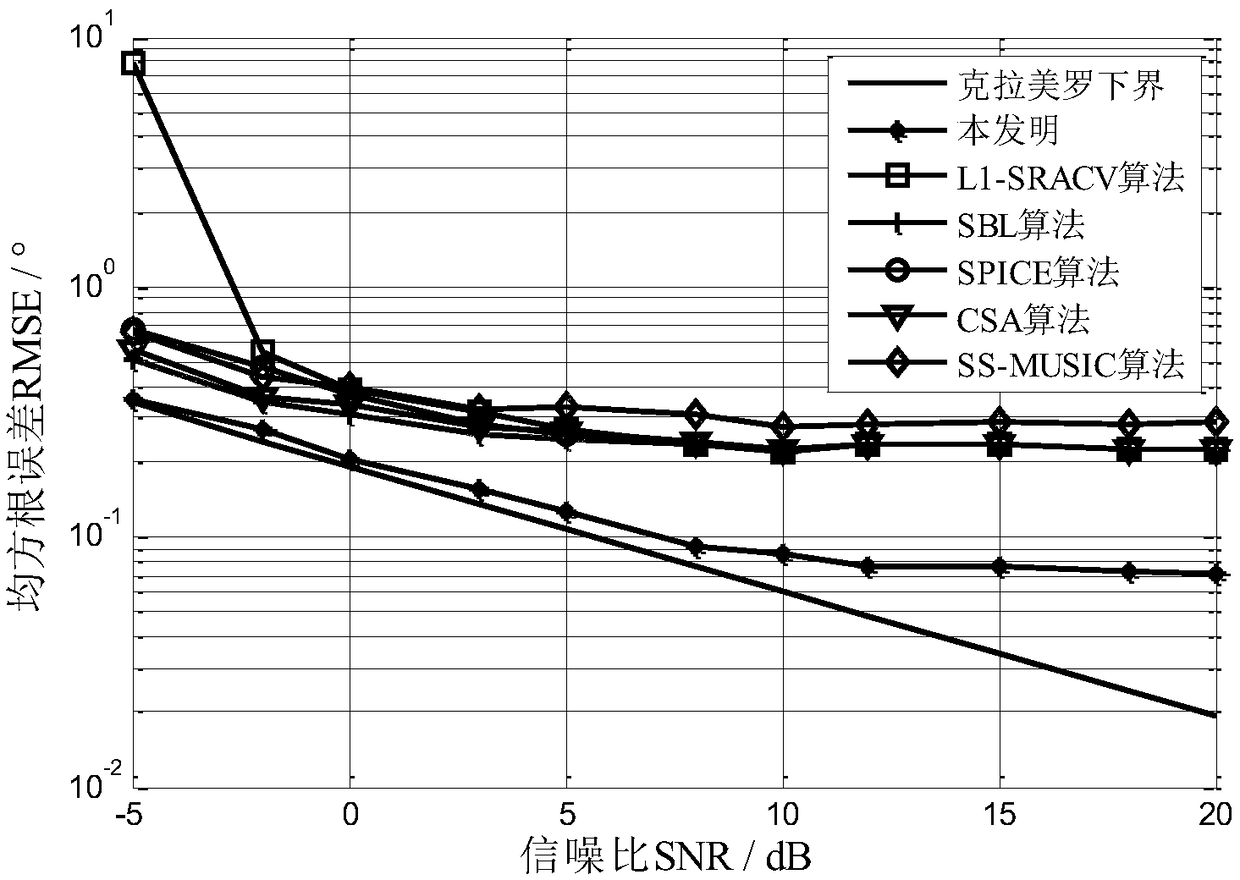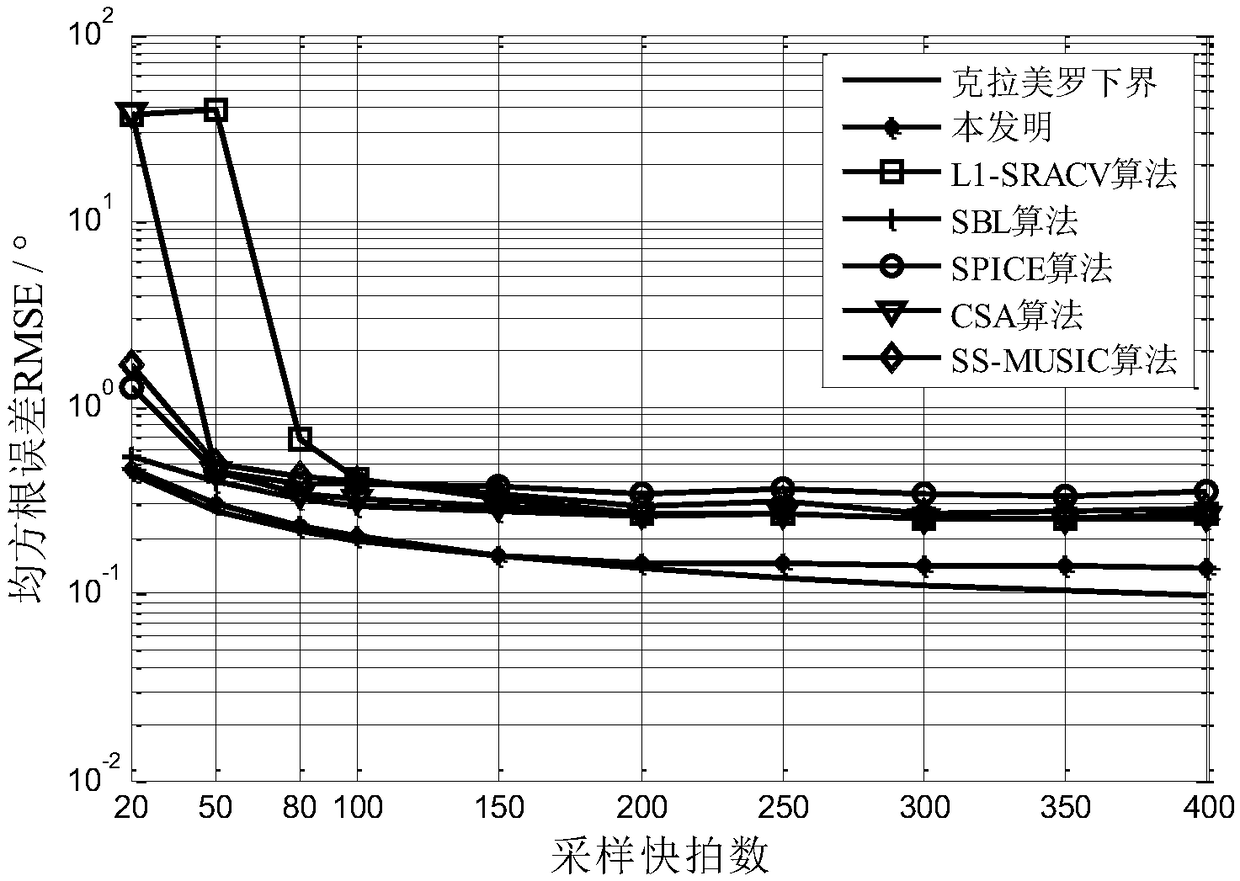Nested array direction-of-arrival angle estimation method based on variational Bayesian inference
A direction-of-arrival and variational Bayesian technology, applied in the field of signal processing, can solve problems such as high computational complexity of convex optimization algorithm, inability to meet estimation needs, and high algorithm complexity, so as to increase the number of identifiable targets , the effect of flat posterior probability distribution and flat distribution curve
- Summary
- Abstract
- Description
- Claims
- Application Information
AI Technical Summary
Problems solved by technology
Method used
Image
Examples
Embodiment Construction
[0041] The present invention will be further described below in conjunction with the accompanying drawings and embodiments.
[0042] Step 1: Use M receiving sensors to form a two-level nested array, the detailed steps are as follows:
[0043] Step 1a: Use M 1Sensors are arranged horizontally at intervals d to form a first uniform linear array, and each sensor is called an array element, and the first array element of the first uniform linear array is used as the initial array element, where M 1 ≥1, 0<d≤λ / 2, λ is the wavelength of the incident narrowband signal;
[0044] Step 1b: Use M-M 1 sensors at intervals (M 1 +1) d is arranged horizontally to form a second uniform linear array, and its first array element is placed at a distance of M from the reference array element 1 At the position d, arrange the first uniform linear array and the second uniform linear array collinearly to form a two-level nested array, where M≥2;
[0045] Step 2: Suppose there are K narrowband sig...
PUM
 Login to View More
Login to View More Abstract
Description
Claims
Application Information
 Login to View More
Login to View More - R&D
- Intellectual Property
- Life Sciences
- Materials
- Tech Scout
- Unparalleled Data Quality
- Higher Quality Content
- 60% Fewer Hallucinations
Browse by: Latest US Patents, China's latest patents, Technical Efficacy Thesaurus, Application Domain, Technology Topic, Popular Technical Reports.
© 2025 PatSnap. All rights reserved.Legal|Privacy policy|Modern Slavery Act Transparency Statement|Sitemap|About US| Contact US: help@patsnap.com



